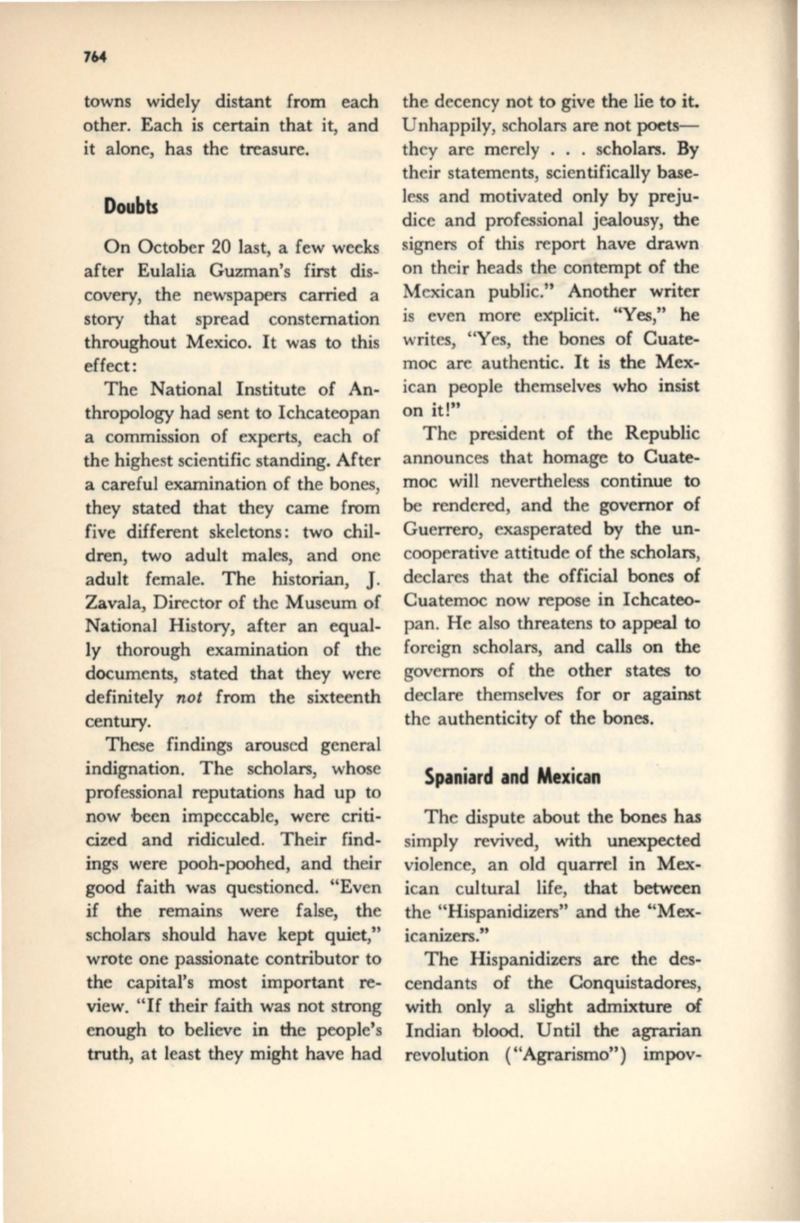
764
towns widely distant from each
other. Each is certain that it, and
it alone, has the treasure.
Doubts
On October 20 last, a few weeks
after Eulalia Guzman's first dis–
covery, the newspapers carried a
story that spread consternation
throughout Mexico. It was to this
effect:
The National Institute of An–
thropology had sent to Ichcateopan
a commission of experts, each of
the highest scientific standing. After
a careful examination of the bones,
they stated that they came from
five different skeletons: two chil–
dren, two adult males, and one
adult female. The historian,
J.
Zavala, Director of the Museum of
National History, after an equal–
ly thorough examination of the
documents, stated that they were
definitely
not
from the sixteenth
century.
These findings aroused general
indignation. The scholars, whose
professional reputations had up to
now been impeccable, were cntI–
cized and ridiculed. Their find–
ings were pooh-poohed, and their
good faith was questioned. "Even
if the remains were false, the
scholars should have kept quiet,"
wrote one passionate contributor to
the capital's most important re–
view.
"If
their faith was not strong
enough to believe in the people's
truth, at least they might have had
the decency not to give the lie to it.
Unhappily, scholars are not poets–
they are merely . . . scholars. By
their statements, scientifically base–
less and motivated only by preju–
dice and professional jealousy, the
signers of this report have drawn
on their heads the contempt of the
Mexican public." Another writer
is even more explicit. "Yes," he
writes, "Yes, the bones of Cuate–
moc are authentic. It is the Mex–
ican people themselves who insist
on it!"
The president of the Republic
announces that homage to Cuate–
moc will nevertheless continue to
be rendered, and the governor of
Guerrero, exasperated by the un–
cooperative attitude of the scholars,
declares that the official bones of
Cuatemoc now repose in Ichcateo–
pan. He also threatens to appeal to
foreign scholars, and calls on the
governors of the other states to
declare themselves for or agaiIl5t
the authenticity of the bones.
Spaniard and Mexitan
The dispute about the bones has
simply revived, with unexpected
violence, an old quarrel in Mex–
ican cultural life, that between
the "Hispanidizers" and the "Mex–
icanizers."
The Hispanidizers are the des–
cendants of the Conquistadores,
with only a slight admixture of
Indian blood. Until the agrarian
revolution ("Agrarismo") impov-


